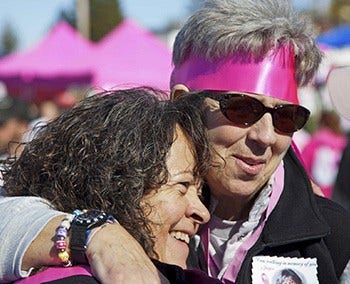Breast Cancer
Whether you or a loved one are worried about developing breast cancer, have just been diagnosed, are going through breast cancer treatment, or are trying to stay well after treatment, this detailed information can help you find the answers you need. Get the most up-to-date facts about breast cancer, plus tools and resources for every step of your journey.
(For information on breast cancer in men, see Breast Cancer in Men.)
Tools & Resources
This information is possible thanks to people like you.
We depend on donations to keep our cancer information available for the people who need it most.




